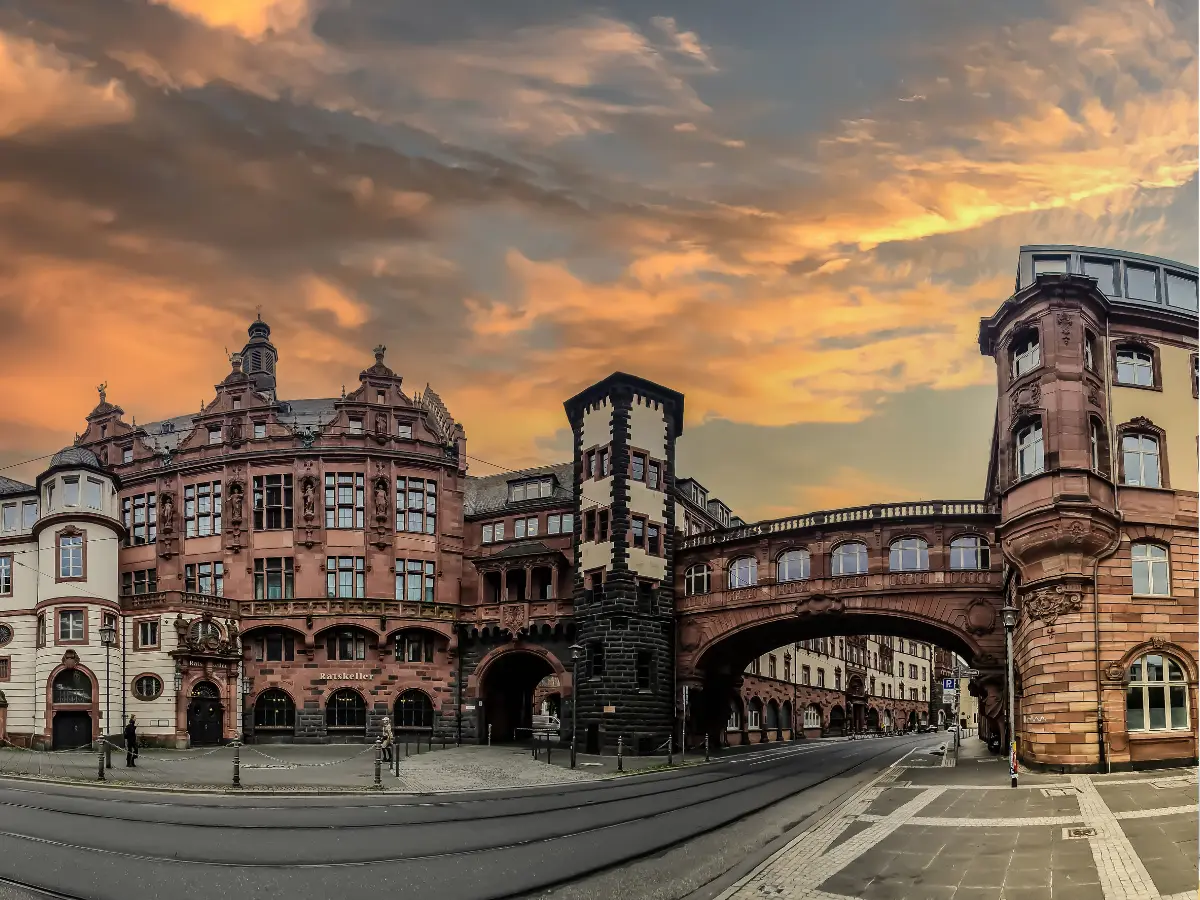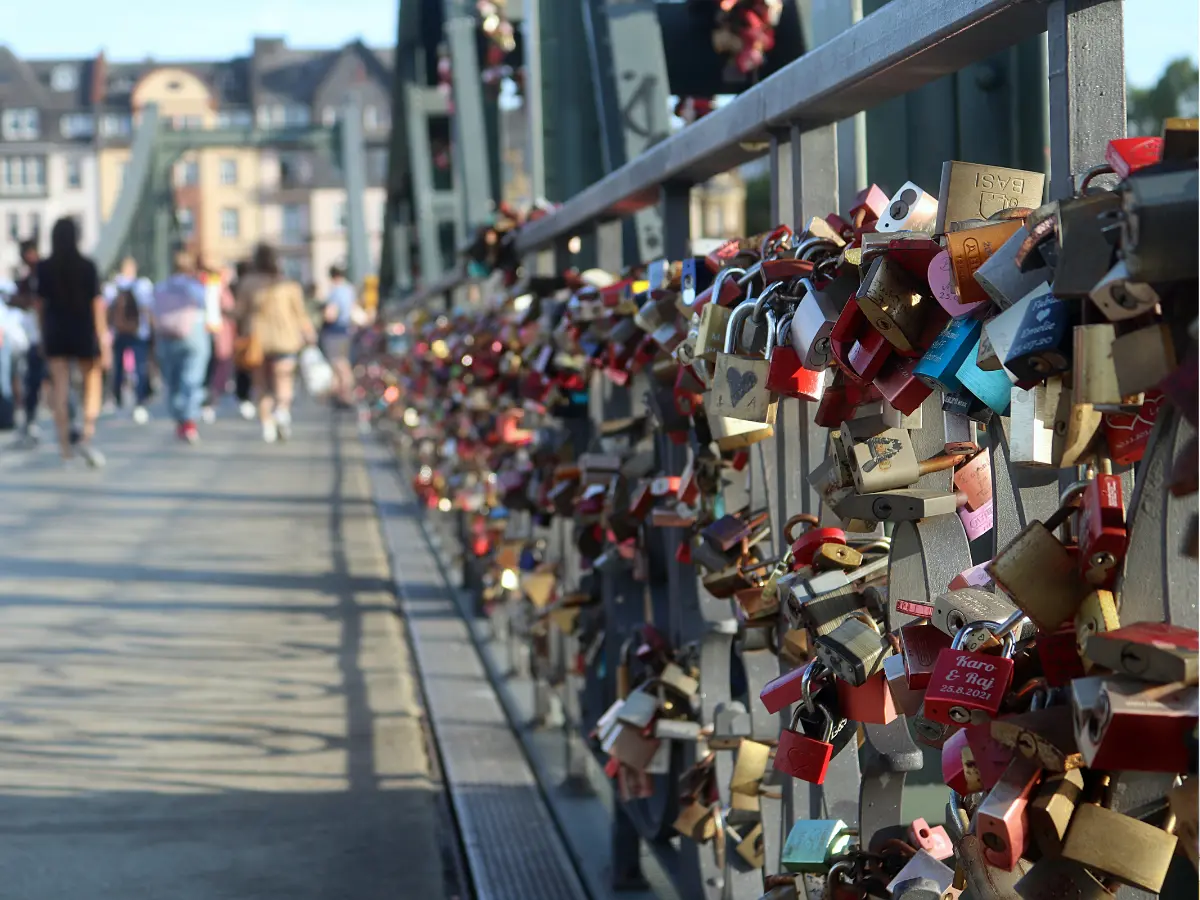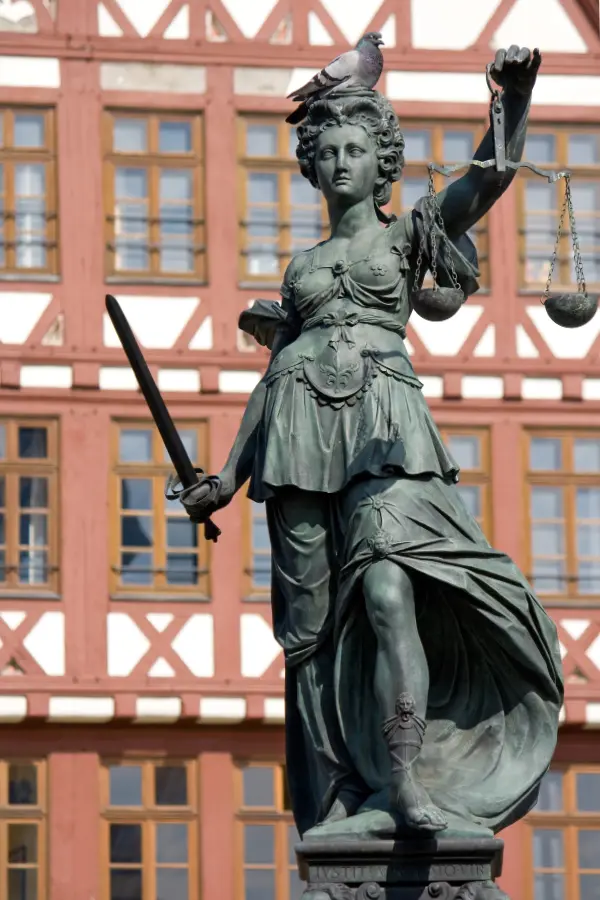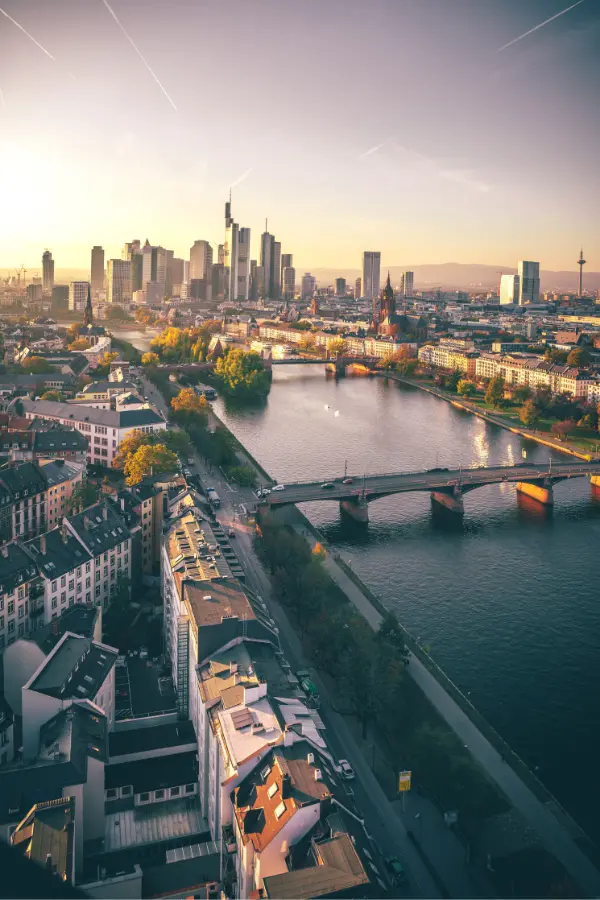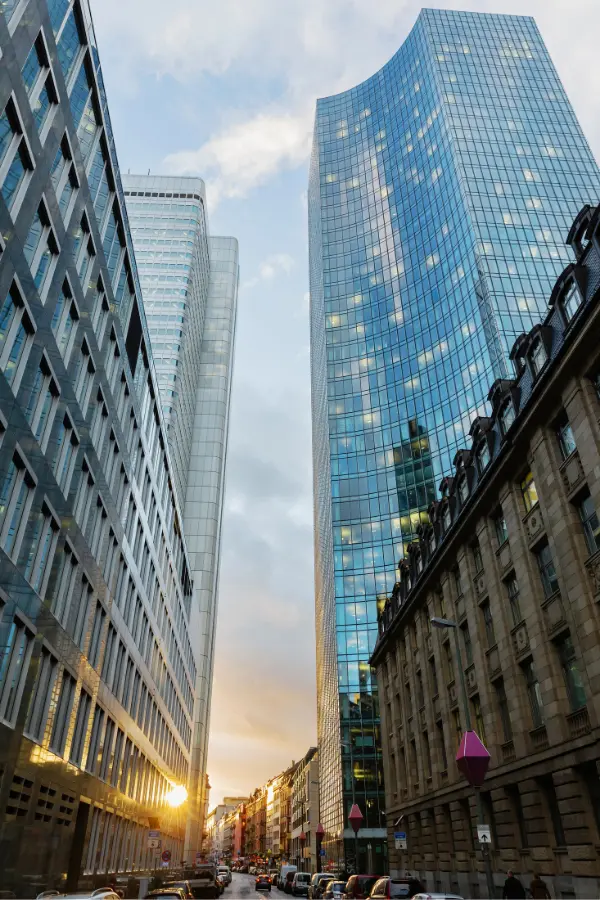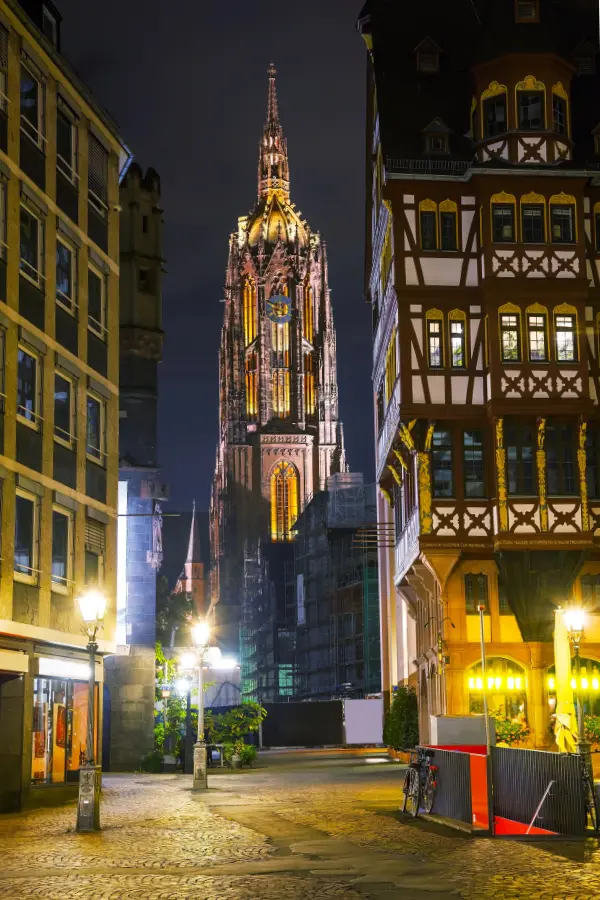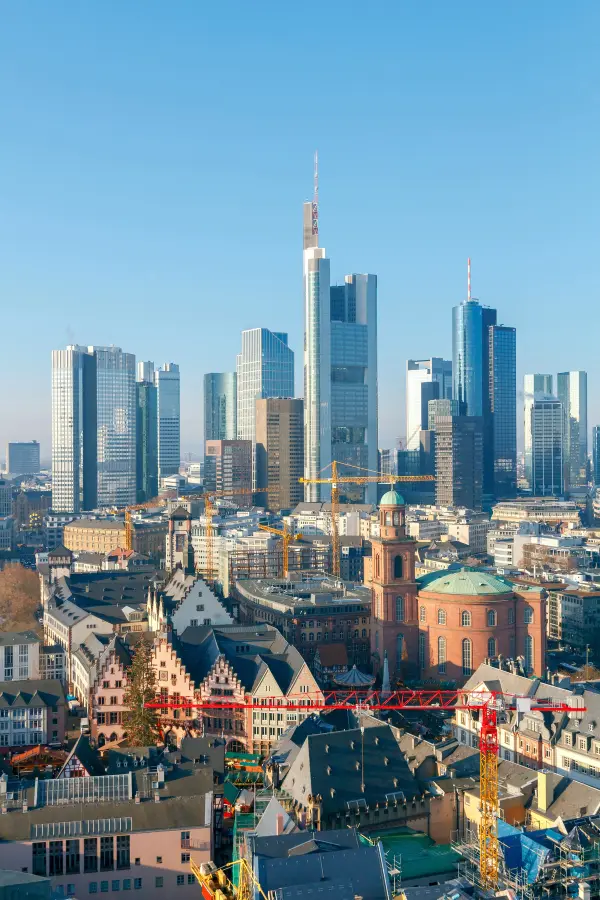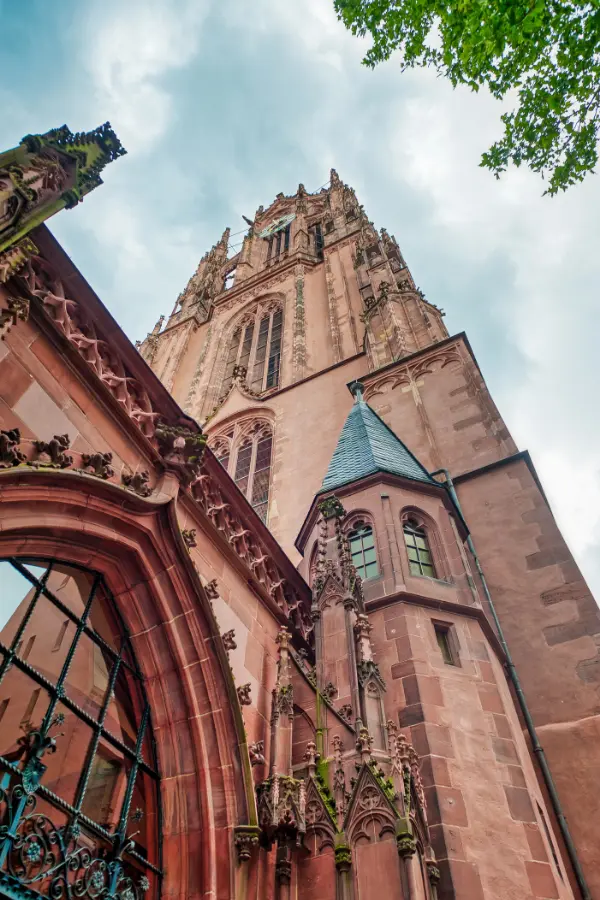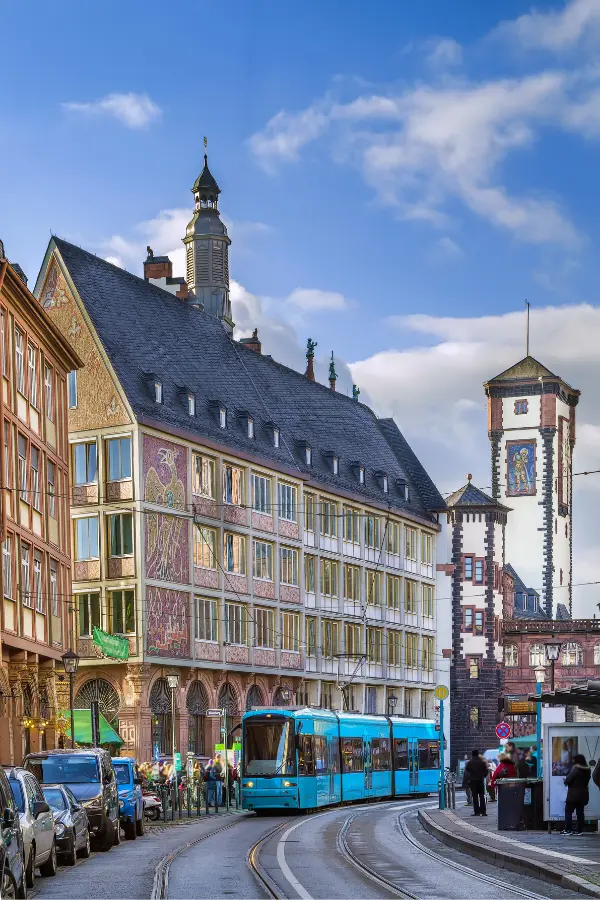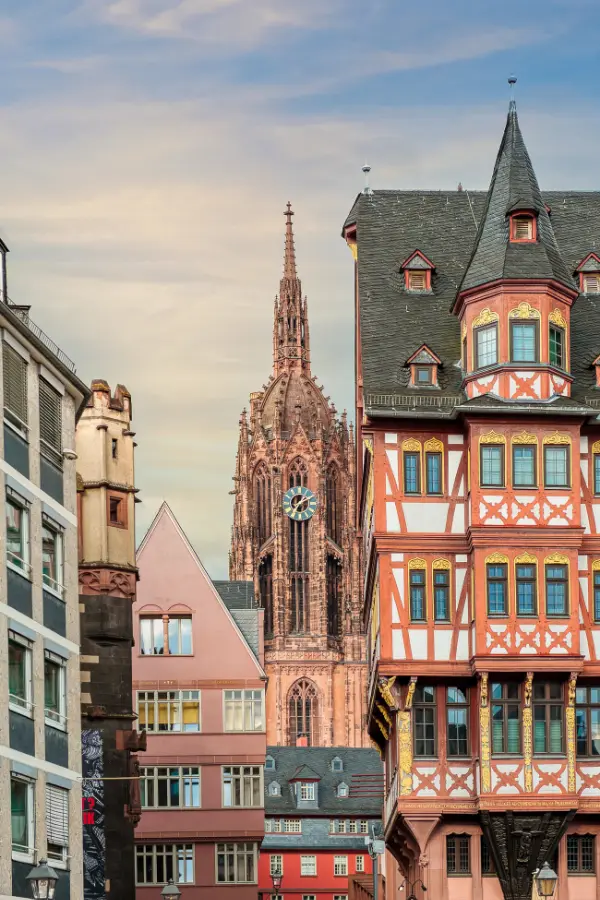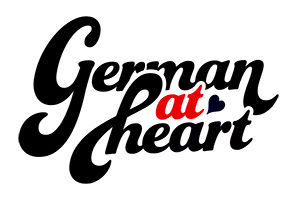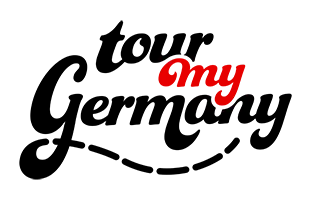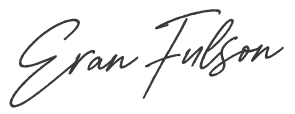Warm up this winter with Oma's newest cookbooks - available on Amazon >>
- Home
- Top German Cities To Visit
- Things to do in Frankfurt
The Best Things to do in Frankfurt: Top-Rated Tourist Attractions
By: Eran Fulson / Traveler, writer, and curious observer of all things German.
Describing the "Best Things to do in Frankfurt" in five words or fewer is probably best described as a “Swiss Army Knife City”. My ingrained Germanic efficiency means only four out of five words were ever needed, and that's if “City” was even necessary either.
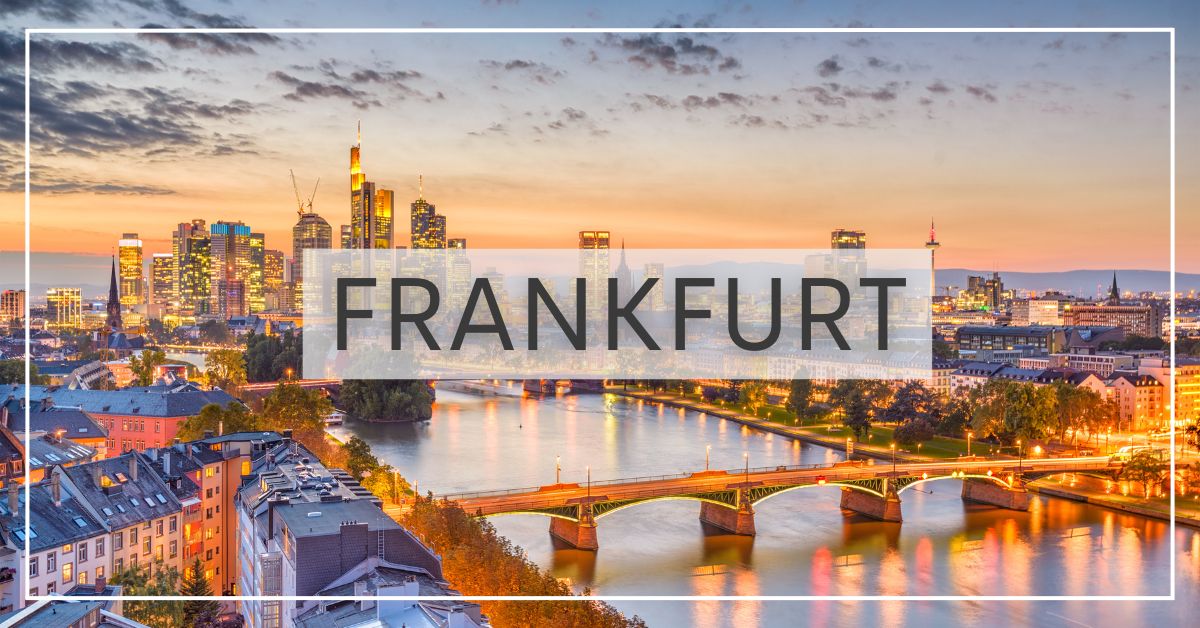
On this page:
As far as major cities go, Frankfurt covers all the bases and should rank pretty high up on your travel itinerary.
Frankfurt humbly rubs shoulders with the likes of New York and London for cosmopolitan city status.
It doesn’t matter who you are or where you’re from. Rather, it feels like meeting an old friend and picking up where you left off.
Curated Gallery:
Nitty Gritty
Frankfurt am Main, as it’s officially known by its location on the Main River, is Germany’s fifth-largest city and the largest financial hub in Europe.
Before World War II, Frankfurt’s Old Town was one of Germany’s largest medieval cities.
However, allied bombing destroyed much of the city and a modern approach was taken with the rebuilding. That is not to say it’s all glass and concrete. Many historical landmarks were saved and restored back to their original state.
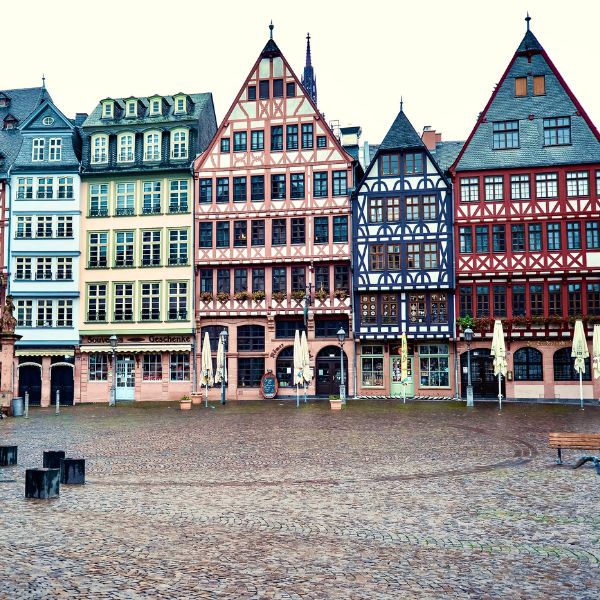
Frankfurt is built on Celtic and Germanic settlements from the 1st century B.C. The first mention of Franconofurt is in the late 8th century by Charlemagne’s personal biographer, Einhard.
Frankfurt was designated as a permanent site for the election of German kings in 1356 via the Golden Bull of King Charles IV (constitution of the Holy Roman Empire).
The city also served as the capital of Germany from 1816 - 1866 where it was annexed by Prussia following the Seven Weeks War. Upon integration into a united Germany in 1871, Frankfurt continued its journey into the major industrial city it is today.
Getting There
Unless you’re already in the country, chances are you’ll be flying into Frankfurt Airport (FRA).
The busiest airport in Germany, and fourth busiest in Europe, Frankfurt Airport services over three hundred destinations on five continents, making it one of the most direct routes for travel in the world.
Once you’ve collected your bags, the simplest way into Frankfurt city center is via the S-Bahn (light rail). A ten-minute ride will see you to Frankfurt’s Hauptbahnhof (Main Rail Station).
Of course, there are also buses, taxis, and car hire options.
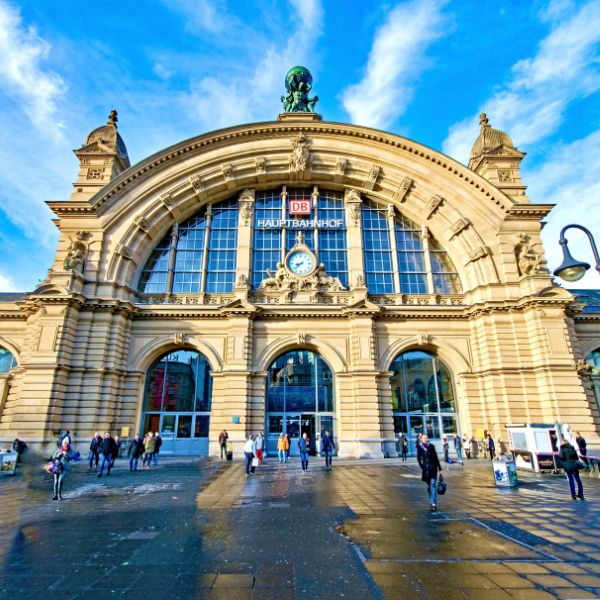
Things to do:
Museum Bounty
Everything in moderation does not apply here. Thirty-nine museums make up Frankfurt’s Museumsufer (museum embankment) along the banks of the Main River with many in easy walking distance of each other.
Because Frankfurt was a free imperial city, there are no royal collections like many other cities possess. Instead, the city had to rely on contributions from local collectors and the city council for curation, funding, and museum management.
This response has resulted in one of the most diverse and eclectic collaborations of the best museums in Germany, one with an air of passion for education rather than a hoarding of artistic wealth.
Museumsufer also offers a one-for-all ticketing option for ease of entry during your visit.
There are simply too many to delve into at great length, so instead, here are our top ten picks in no particular order - but of course, feel free to go off-piste and discover something new.
Städel Museum
The crème de la crème of the Frankfurt art museums, the Städel Museum houses an exhaustive collection of art from the 14th century to the present, possessing works by some of the most renowned artists in history.
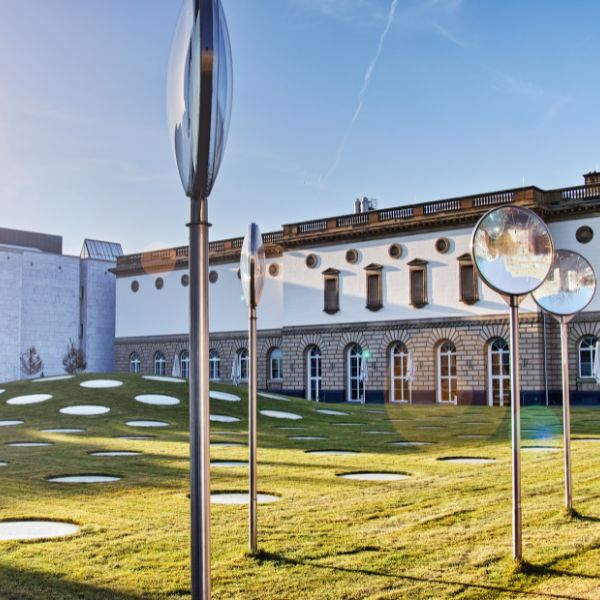
Museum für Moderne Kunst (Museum of Modern Art)
No museum of modern art would be complete without the likes of Roy Lichtenstein and Andy Warhol gracing its halls.
The MMK also contains over 5,000 works from the 1960s to the present, featuring many national and international artists.
Schirn Kunsthalle
This is, essentially, a venue space for temporary art exhibitions.
While that sounds a bit drab, the Schirn Kunsthalle (Schirn Art Gallery) is held in high status and has exhibition collaborations with other museums such as the Tate Gallery and the Guggenheim.
There are no favorites here, as the exhibits feature both contemporary and modern art.
Goethe House
A memorial as much as a museum, Goethe House is the home of Germany’s most influential literary giant – Johann Wolfgang Goethe.
The house details the life Johann and his family lived, which led to the writing of his first major works and the beginnings of “Faust” before he left home.
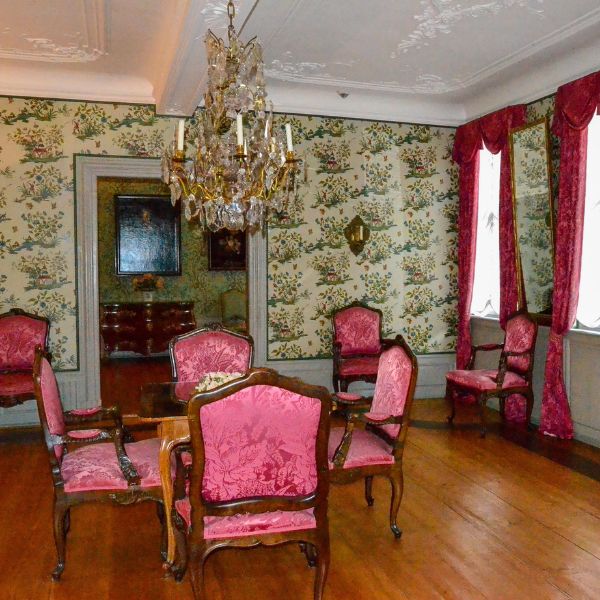
Historisches Museum
You might hazard a guess at the main focus of this one.
But you might not have guessed the Historisches Museum (Historical Museum) to be the oldest in Frankfurt, and one of the largest.
64,500 square feet of exhibition space from the past, present, and future of the city are displayed with ongoing temporary exhibits.
Juedisches Museum
The Juedisches Museum (Jewish Museum) is situated in the former home of the Rothschilds.
Inside is a permanent exhibition detailing the impact of the Jewish community on the cultural and economic development of Frankfurt.
The headline exhibit is the Frank Family Center, which is the world’s first deep dive into Anne Frank’s family.
Senckenberg Natural History Museum
The Senckenberg is one of the largest museums of its kind in Europe.
Over 10,000 exhibits showcase all that the biological world has to offer.
Not only does it contain the biggest collection of dinosaurs in Germany, but the permanent exhibition of a 19-foot diorama of a coral reef with over 1,000 elements ranging from porcupinefish to whitetip reef sharks is also not to be missed.
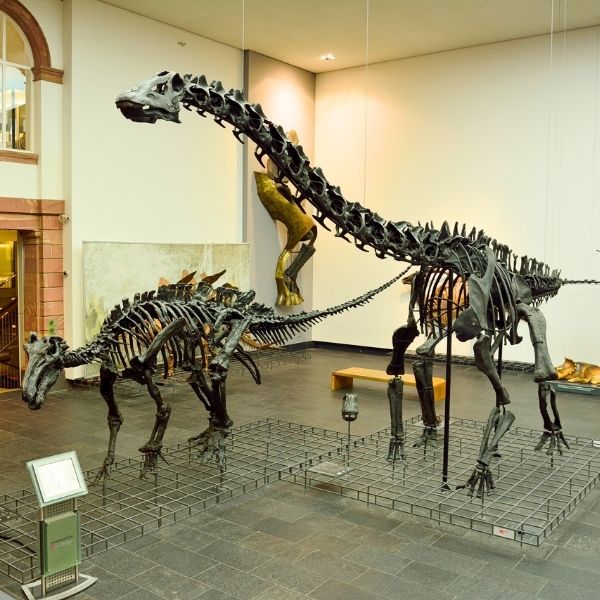
Deutsches Architekturmuseum
No translation is needed here, but for continuity sake, the Deutsches Architekturmuseum (German Architecture Museum) is the first of its kind in Germany.
After calling first dibs on the idea, it's also regarded as the most prestigious dedicated to architecture.
The evolution of architecture from primitive huts to skyscrapers is offered with engaging displays, and an onsite café features views of the Frankfurt skyline.
Caricatura Museum
Undoubtedly possessing the highest humor content of any museum on this list, the Caricatura Museum is the only museum of fine art comics in Europe.
For those in the know, you'll find drawings by F.W. Bernstein and Hans Traxler among many others in its permanent exhibition.
The museum was given the State of Hessen Cultural Prize for its unique portrayal of caricature and the art of comics.
Deutsches Filmmuseum
The Deutsches Filmmuseum (German Film Museum) is not only a museum, but a cinema, archives and collections, and film festival hotspot all under one roof.
National and international films are exhibited along with the history that encapsulates the fascinating world of cinema.
There is no shortage of exhibitions here as an ever-changing carousel of film's greatest hits are showcased with passionate dedication.
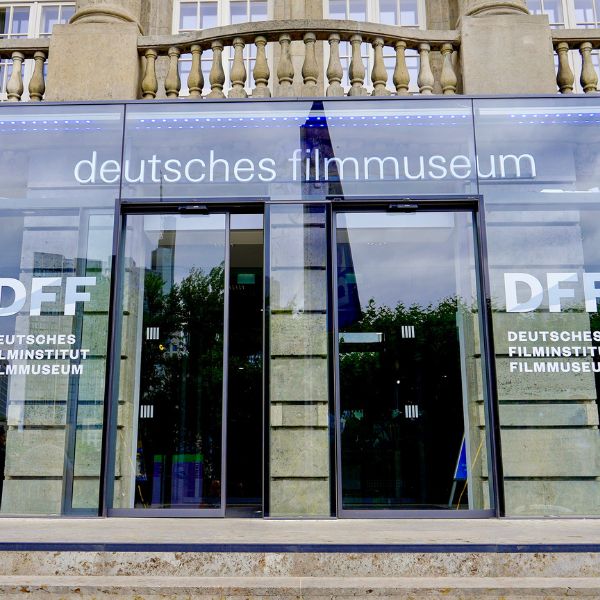
Altstadt - Old Kids on the Block
While the Altstadt (Old Town) district is the smallest of the forty-six districts in Frankfurt, it is quite possibly one of the most visually idyllic.
Hundreds of years ago, Frankfurt was Germany’s largest timber frame town. A beautiful example of Gothic-styled architecture that was tragically destroyed in an Allied air raid in May 1944.
In the decades that followed, and following a concerted effort in recent years, have seen this New Old Town revitalized back into its former glory. The district has been rebuilt following original plans to recreate the area as it was hundreds of years ago.
Amongst the notable landmarks are the St. Bartholomew Cathedral, St. Paul's Church, The Römer (Town Hall), and the Römerberg (Historical Town Center).
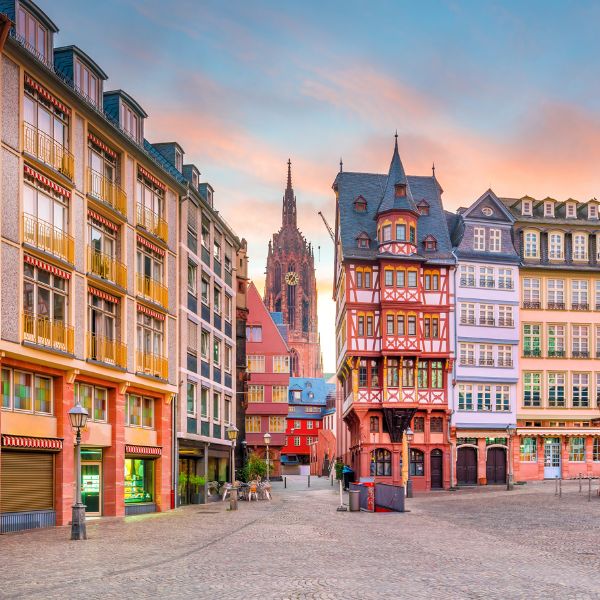
Römer - If it Ain’t Broke
In today’s generation of disposability, a feeling of pride comes to possessions that manage to stick around longer than a phone contract. My two longest-tenured items feature a teddy bear from when I was born (circa, vintage-Fleetwood Mac and The Rolling Stones) and a blanket from Mexico more than twenty years ago.
Both of those, however, pale in comparison to Frankfurt’s Römer (Town Hall). The three-gabled Römer has served as the city’s Town Hall since 1405 and shows no signs of moving on.
Situated in Römerplatz (Römer Square), the Town Hall is comprised of three interconnected houses: the Römer, the Goldener Schwan, and the Kaisersaal (Emperor’s Hall). While entry may be restricted, the Gothic facade is worthy of a few cheeky snaps.
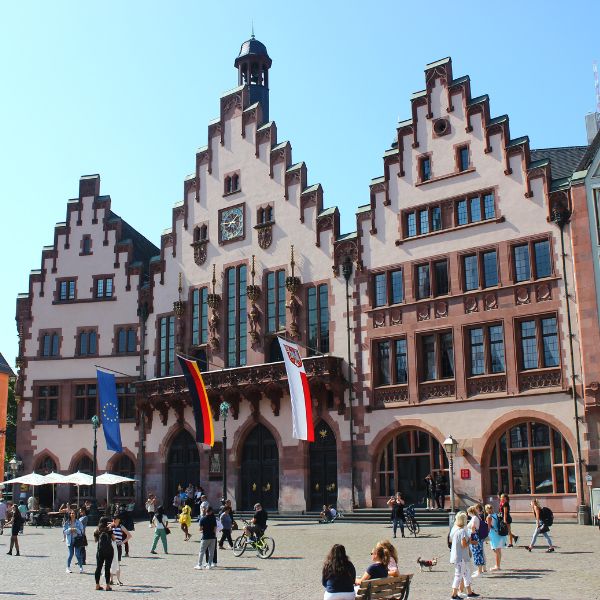
Old Opera House
Germany’s so-called most beautiful ruin, the Alte Oper (Old Opera House), withstood the worst of World War II with its outer walls and facade largely intact. Internally, however, ruined is putting it mildly.
It took nearly forty years before the doors reopened with a modern interior concert hall wrapped in a renewed historical facade as it was in 1880.
The original opening featured Don Giovanni by Mozart, and the current iteration still revels in its high-quality program with world-class musicals and shows.
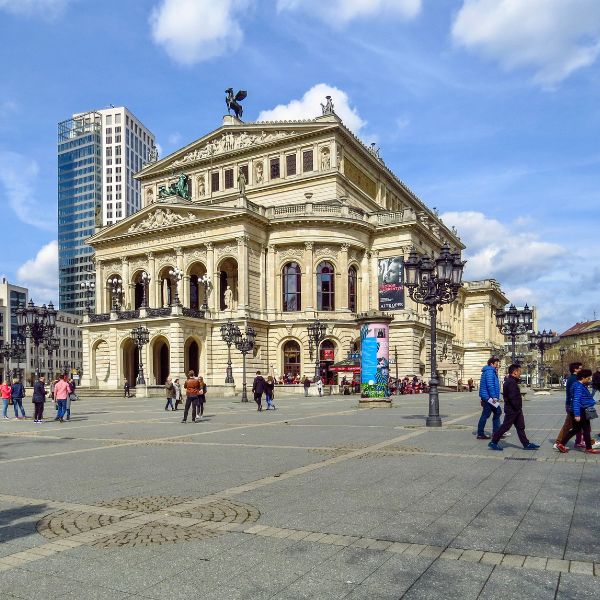
Churches
Frankfurt Cathedral - Third Time's the Charm
The Imperial Cathedral of Saint Bartholomew (unofficially known as Frankfurt Cathedral) is one of the city’s main attractions.
Far beyond the beautiful internal furnishings, the viewing platform at the top of 328 steps in the Cathedral Tower offers unparalleled views of Frankfurt. Definitely worth the workout to get there.
The cathedral was built over forty-three years, finishing in 1358, replacing the remains of the former palace chapel, circa 822.
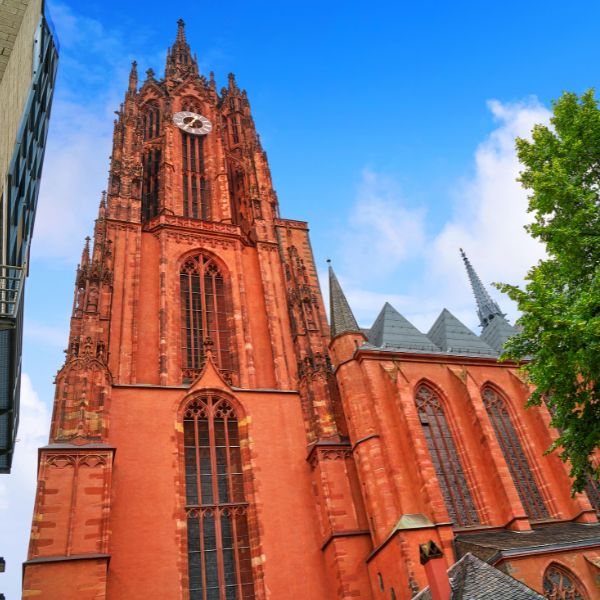
The Cathedral suffered two setbacks in the form of a fire in 1867, which destroyed it once, then again during the World War II bombings.
While the rebuilds have considerably changed the church in parts, the importance of the Cathedral to Frankfurt has not wavered.
Since 1562, there have been ten German emperors and kings of the Holy Roman Empire elected or crowned in the cathedral.
St. Paul's Church - Democratic Beginnings
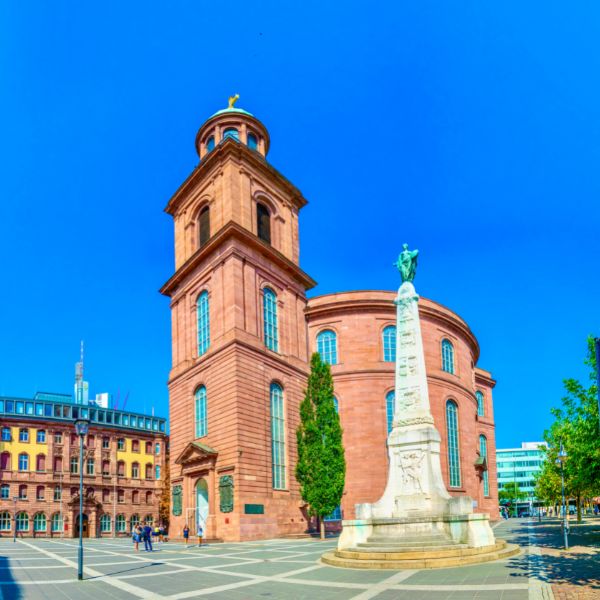
A comparatively unassuming building in regards to its rivals, St. Paul’s Church is actually a frequented stop by guided tours in Frankfurt.
What it lacks in opulent grandeur, it makes up for in unquestionable national significance, having played a vital role in the Germany we know today.
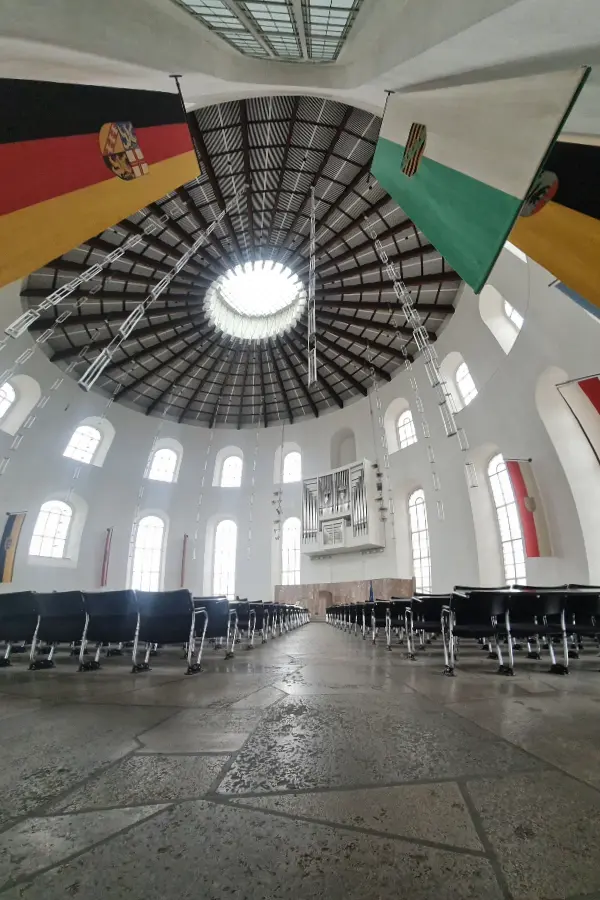 St. Paul's Church - Upstairs
St. Paul's Church - UpstairsSt. Paul’s was originally a Lutheran church but is more well known for serving as the location for the inaugural democratic constitution of Germany and the first all-German parliament in 1848.
It also holds the distinction of being one of the last locations where John F. Kennedy gave an international speech before his assassination a few months later.
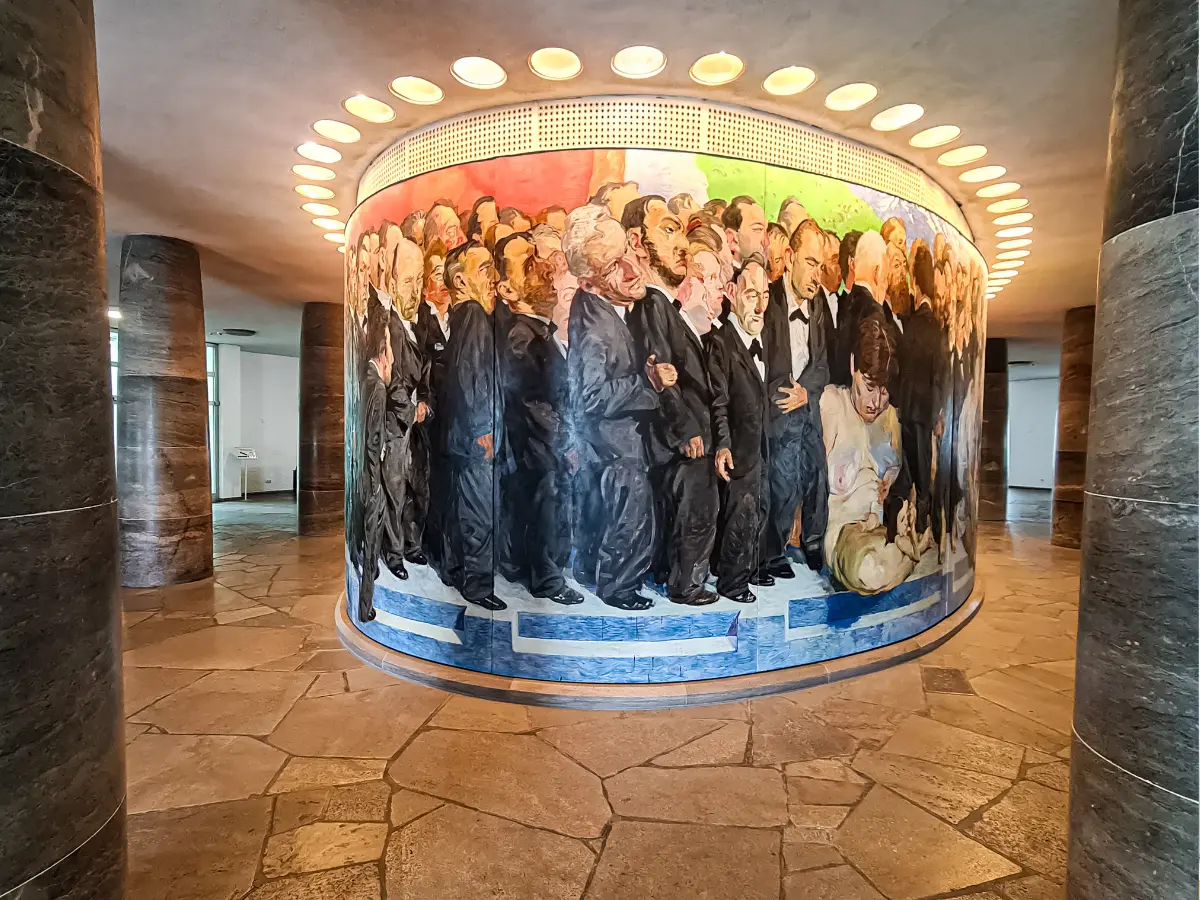 St. Paul's Church - Mural Downstairs
St. Paul's Church - Mural DownstairsSt. Nicholas Church - Go Fish
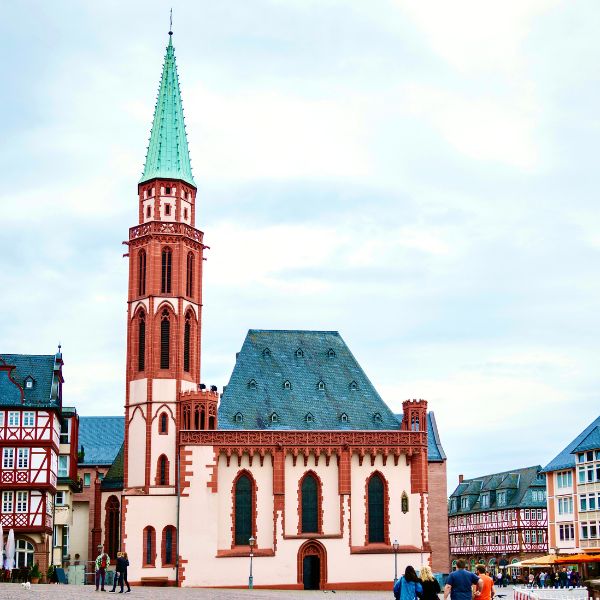
In the event you happen to unknowingly walk past Alte Nikolaikirche (Old St. Nicholas Church), you probably won’t miss any one of the 51 bells in its tower chiming off.
This 15th-century medieval Lutheran Church is named after St. Nicholas, patron saint of fishermen, and was one of the few notable buildings in Frankfurt to escape World War II relatively unscathed.
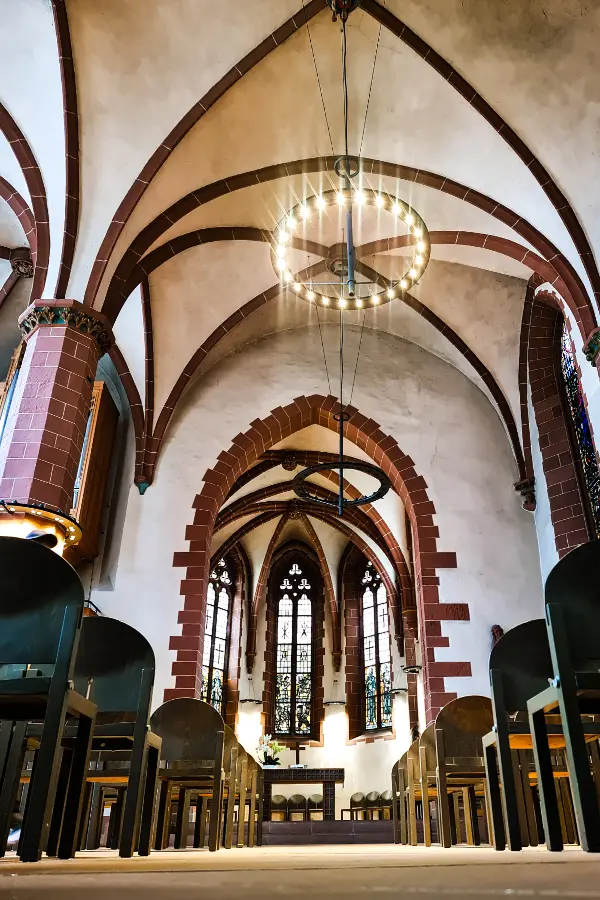
Located in Altstadt near City Hall, the church doubled down on its service to the community with its tower.
This was used by watchmen to signal for ships coming down the river and to look out for fires across the city.
The tower is still open as the perfect place for spectacular views over Römerberg, however, but only to groups with a pre-booking.
Eiserner Steg - Cast Iron Love
Interesting Fact
Inscribed on the bridge is a quote from Homer's Odyssey which translates to, "Sailing on the dark sea to people of another tongue."
A legacy of Frankfurt’s industrial age since 1869, the Eiserner Steg (Iron Bridge) joins Römerberg Square to Old Sachsenhausen and is the only footbridge crossing on the Main River.
The bridge offers fantastic views of the Gothic Museum Embankment to the south and the ‘Mainhatten’ skyscrapers of the Financial District to the North.
In recent years, thousands of ‘Love Locks’ have been appearing along the bridge as star-crossed lovers declare their impending rusty love for each other before throwing away the key to the river below.
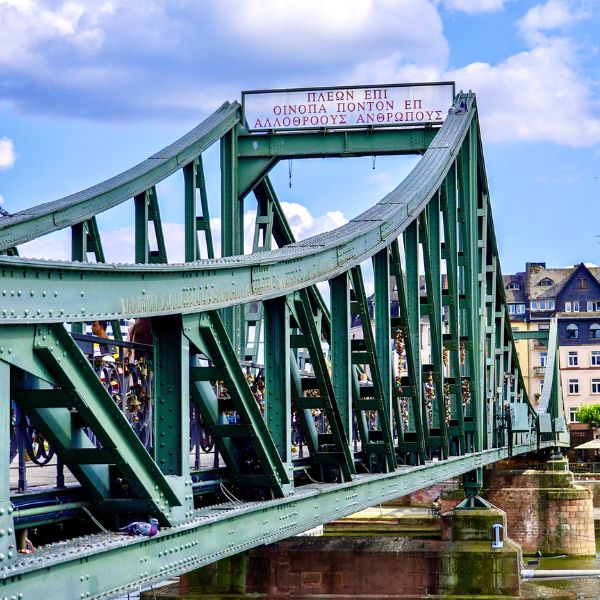
Financial District - On the Money
Step back into the modern world with a stroll down Neue Mainzer Straße (New Main Street) in what is locally called the Bankenstadt (The City of Banks).
While some of the historical buildings that survived World War II are dotted throughout, numerous tall skyscrapers tower overhead in this economic beating heart of Frankfurt.
Rising 656 feet above Frankfurt is the Main Tower, named after the nearby Main River. Tied for the fourth tallest in Germany, it is the only skyscraper in Frankfurt with two public viewing platforms offering stunning panoramic views.
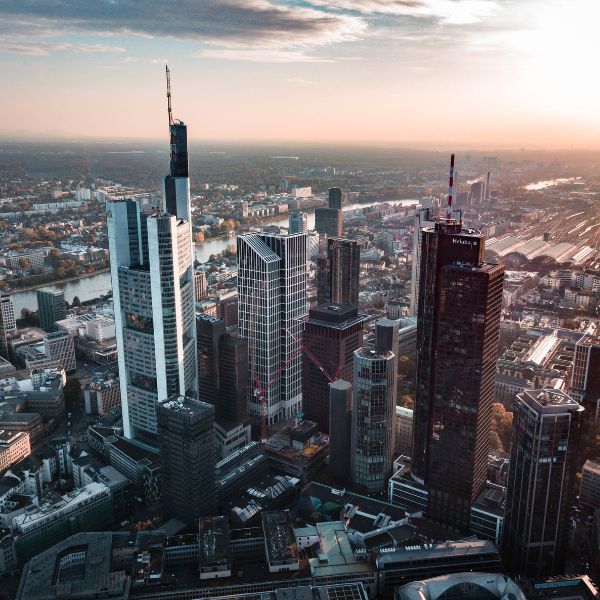
Not to be outdone, the title of the tallest skyscraper in, not only Frankfurt, but all of Germany, belongs to the Commerzbank Tower at 850 feet. It was also designed as the first ecological skyscraper in the world.
Environmentally friendly technologies were employed in the construction and subsequent operation of the tower.
So-called sky gardens allow natural light and a mini green space to flow through various levels of the building.
Apfelwein - One Way for an Apple a Day
You’d be forgiven for assuming that having a drink in Germany entails lifting a mammoth stein full of beer while wearing the obligatory lederhosen. But they do things a little differently in Frankfurt.
While there are a number of quality brewers offering their own select choice of beers, Frankfurt is perhaps best known for its Apfelwein (apple wine).
250 years ago, a grape phylloxera decimated the local vineyard's wine production. Adapting to the pests liking grapes, apples were shown to be unaffected by the parasites, and hey presto, apple wine became a thing.
Effectively a cousin to apple cider, apple wine is touted to allegedly promote good health. While health benefits may be open for debate, the calorie content is unquestionable, as proven to contain half the calories compared to an equal measure of white wine.
Traditionally, apple wine is served from a stoneware jug called a “Bemble” and poured into a ribbed glass known as a “Gerippte”.
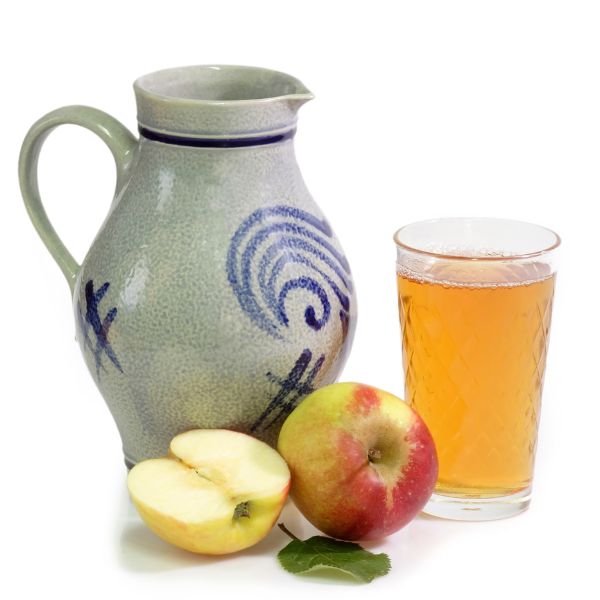
While you can find apple wine all over Frankfurt, it’s best found in Old Sachsenhausen, a great place to experience a more vintage side of the city.
Surviving the destruction of World War II, half-timbered houses separated by winding cobbled streets are filled with taverns and restaurants and offer fleeting glimpses into medieval Frankfurt.
Christmas Markets
In a city known for its standing on the global financial market, it doesn’t take half-measures with its Christmas Markets either. The first official reference to a Christmas Market in Frankfurt dates back to 1393 making it one of the oldest in Germany.
The market is not only limited to Germany, as it is effectively twinned with the Birmingham Frankfurt Christmas Market over in Great Britain.
Many vendors and suppliers make the journey from Frankfurt to Birmingham, and put on as close to a German Christmas Market as you’re likely to find outside of Germany.
Back in Frankfurt, you’ll find the market between the Römerberg and Paulskirche down to the banks of the Main River. More than 240 festive stalls offer all manner of handcrafted wares and a variety of food and drink to keep you going.
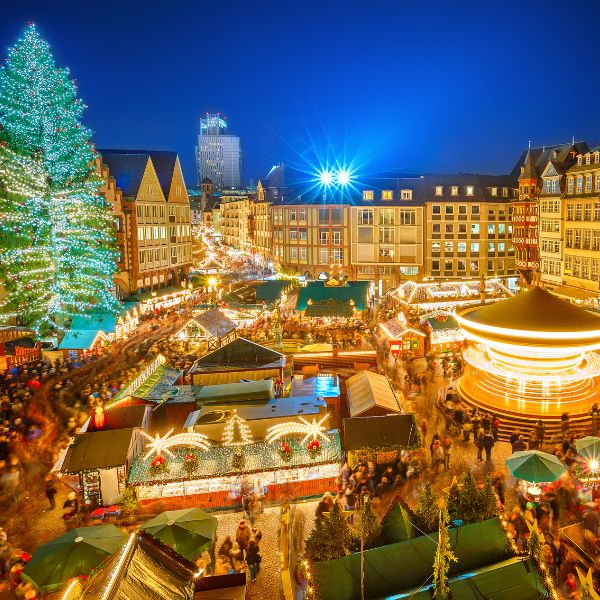
Among all the stalls and a nearly 100-foot tall Christmas tree, you’re likely to see the Frankfurt Christmas Market Mug in hands all over the city.
A new mug design has been released every year since 2000, making it a sought-after collector’s item.
No dispersion is given to whatever you choose to fill it with, but it definitely makes a notable souvenir to bring back home.
Final Muse
Modern and medieval walk in lock-step throughout Frankfurt with unassuming harmony. Much has been done to keep the city’s history alive while still making a name for itself globally in the 21st century.
Century's-old recipes of food and drink are mainstays in Frankfurt gastronomy amidst the half-timbered houses and skyscrapers.
Culturally, you would be hard-pressed to do better than the broad range of museums on offer. Coupled with the historical riches and welcoming atmosphere, there is something for everyone.
In short, Frankfurt is very much a one-for-all and all-for-one vibe often reserved for smaller locales.
When was Frankfurt established?
When was Frankfurt established?
1st century
What is the land area of Frankfurt?
What is the land area of Frankfurt?
95.87 square miles
What is the population of Frankfurt?
What is the population of Frankfurt?
759,224 (2021)
What is the GPS location of Frankfurt?
What is the GPS location of Frankfurt?
What are the closest major cities to Frankfurt?
What are the closest major cities to Frankfurt?
44 miles to Mannheim
82 miles to Bonn
95 miles to Stuttgart
95 miles to Cologne
111 miles to Dortmund



